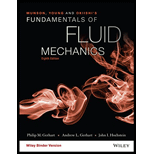
Munson, Young and Okiishi's Fundamentals of Fluid Mechanics, Binder Ready Version
8th Edition
ISBN: 9781119080701
Author: Philip M. Gerhart, Andrew L. Gerhart, John I. Hochstein
Publisher: WILEY
expand_more
expand_more
format_list_bulleted
Question
Chapter 2.6, Problem 60P
To determine
The angle of inclination of the inclined manometer
Expert Solution & Answer
Want to see the full answer?
Check out a sample textbook solution
Students have asked these similar questions
What is gearbox
3
Water at 15°C ( p = 999.1 kg/m³ and µ = 1.138 × 10¯³kg/m.s) is flowing
steadily in a 34-m-long and 6-cm-diameter horizontal pipe made of stainless
steel at a rate of 10 L/s. Determine the pressure drop, the head loss, and the
pumping power requirement to overcome this pressure drop. The roughness
of stainless steel is 0.002 mm.
10 L/s
6 cm
L
The pressure drop is 34.77
kPa.
The head loss is 3.55 m. (Round the final answer to two decimal places.)
The pumping power requirement is 0.348 kW. (Round the final answer to
three decimal places.)
6
10
ints awarded
Scored
Gasoline ( p = 680 kg/m³ and v = 4.29 × 107 m²/s) is transported at a
rate of 240 L/s for a distance of 2 kilometre. The surface roughness of the
piping is 0.03 mm. If the head loss due to pipe friction is not to exceed 14 m,
determine the minimum diameter of the pipe using the third Swamee-Jain
formula. (Round the final answer to three decimal places.)
The minimum diameter of the pipe is 0.443
m.
Chapter 2 Solutions
Munson, Young and Okiishi's Fundamentals of Fluid Mechanics, Binder Ready Version
Ch. 2.3 - Prob. 1PCh. 2.3 - The deepest known spot in the oceans is the...Ch. 2.3 - A closed tank is partially filled with glycerin....Ch. 2.3 - A 3-m-diameter vertical cylindrical tank is filled...Ch. 2.3 - Blood pressure is usually given as a ratio of the...Ch. 2.3 - An unknown immiscible liquid seeps into the bottom...Ch. 2.3 - A 30-ft-high downspout of a house is clogged at...Ch. 2.3 - How high a column of SAE 30 oil would be required...Ch. 2.3 - Bathyscaphes are capable of submerging to great...Ch. 2.3 - The deepest known spot in the oceans is the...
Ch. 2.3 - A submarine submerges by admitting seawater (S =...Ch. 2.3 - Determine the pressure at the bottom of an open...Ch. 2.3 - In a certain liquid at rest, measurements of the...Ch. 2.3 - Because of elevation differences, the water...Ch. 2.3 - Under normal conditions the temperature of the...Ch. 2.3 - Often young children drink milk (ρ = 1030 kg/m3)...Ch. 2.3 - (See The Wide World of Fluids article titled...Ch. 2.4 - What would be the barometric pressure reading, in...Ch. 2.4 - Denver, Colorado, is called the “mile-high city”...Ch. 2.4 - Prob. 20PCh. 2.4 - Pikes Peak near Denver, Colorado, has an elevation...Ch. 2.4 - Equation 2.12 provides the relationship between...Ch. 2.4 - As shown in Fig. 2.6 for the U.S. standard...Ch. 2.4 - (See The Wide World of Fluids article titled...Ch. 2.5 - On a given day, a barometer at the base of the...Ch. 2.5 - Aneroid barometers can be used to measure changes...Ch. 2.5 - Bourdon gages (see Video V2.4 and Fig. 2.13) are...Ch. 2.5 - On the suction side of a pump, a Bourdon pressure...Ch. 2.5 - A Bourdon pressure gage attached to the outside of...Ch. 2.6 - Obtain a photograph/image of a situation in which...Ch. 2.6 - A U-tube manometer is used to check the pressure...Ch. 2.6 - A barometric pressure of 29.4 in. Hg corresponds...Ch. 2.6 - For an atmospheric pressure of 101 kPa (abs)...Ch. 2.6 - The closed tank of Fig. P.2.34 is filled with...Ch. 2.6 - A mercury manometer is connected to a large...Ch. 2.6 - The U-tube manometer shown in Fig. P2.36 has two...Ch. 2.6 - A U-tube manometer is connected to a closed tank...Ch. 2.6 - The container shown in Fig. P2.38 holds 60 °F...Ch. 2.6 - A closed cylindrical tank filled with water has a...Ch. 2.6 - Two pipes are connected by a manometer as shown in...Ch. 2.6 - Find the percentage difference in the readings of...Ch. 2.6 - A U-tube manometer is connected to a closed tank...Ch. 2.6 - For the inclined-tube manometer of Fig. P2.43, the...Ch. 2.6 - A flowrate measuring device is installed in a...Ch. 2.6 - The sensitivity Sen of the micromanometer shown in...Ch. 2.6 - The cylindrical tank with hemispherical ends shown...Ch. 2.6 - Determine the elevation difference. Δh, between...Ch. 2.6 - What is the specific gravity of the liquid in the...Ch. 2.6 - For the configuration shown in Fig. P2.49 what...Ch. 2.6 - The manometer shown in Fig. P2.50 has an air...Ch. 2.6 - The U-tube manometer shown in Fig. P2.51 has legs...Ch. 2.6 - Both ends of the U-tube mercury manometer of Fig....Ch. 2.6 - The inverted U-tube manometer of Fig. P2.53...Ch. 2.6 - An inverted U-tube manometer containing oil (SG =...Ch. 2.6 - The sensitivity Sen of the manometer shown in Fig....Ch. 2.6 - In Fig. P2.56 pipe A contains gasoline (SG = 0.7),...Ch. 2.6 - The mercury manometer of Fig. P2.57 indicates a...Ch. 2.6 - Consider the cistern manometer shown in Fig....Ch. 2.6 - Prob. 59PCh. 2.6 - Prob. 60PCh. 2.6 - Determine the new differential reading along the...Ch. 2.6 - Prob. 62PCh. 2.6 - Determine the ratio of areas, A1/A2, of the two...Ch. 2.6 - Prob. 64PCh. 2.6 - Prob. 65PCh. 2.6 - An inverted hollow cylinder is pushed into the...Ch. 2.8 - Obtain a photograph/image of a situation in which...Ch. 2.8 - The basic elements of a hydraulic press are shown...Ch. 2.8 - The hydraulic cylinder shown in Fig. P2.69, with a...Ch. 2.8 - A Bourdon gage (see Fig. 2.13 and Video V2.4) is...Ch. 2.8 - A bottle jack allows an average person to lift one...Ch. 2.8 - Suction is often used in manufacturing processes...Ch. 2.8 - A piston having a cross-sectional area of 0.07 m2...Ch. 2.8 - Prob. 74PCh. 2.8 - The container shown in Fig. P2.75 has square cross...Ch. 2.8 - Find the weight W needed to hold the wall shown in...Ch. 2.8 - Determine the magnitude and direction of the force...Ch. 2.8 - An automobile has just dropped into a river. The...Ch. 2.8 - Consider the gate shown in Fig. P2.79. The gate is...Ch. 2.8 - Will the gate in Problem 44 ever open?
Ch. 2.8 - A tank contains 6 in. of oil (S = 0.82) above 6...Ch. 2.8 - A structure is attached to the ocean floor as...Ch. 2.8 - Concrete is poured into the forms as shown in Fig....Ch. 2.8 - A long, vertical wall separates seawater from...Ch. 2.8 - Forms used to make a concrete basement wall are...Ch. 2.8 - While building a high, tapered concrete wall,...Ch. 2.8 - A homogeneous, 4-ft-wide, 8-ft-long rectangular...Ch. 2.8 - A gate having the shape shown in Fig. P2.88 is...Ch. 2.8 - A pump supplies water under pressure to a large...Ch. 2.8 - Prob. 90PCh. 2.8 - Prob. 91PCh. 2.8 - The dam shown in Fig. P2.92 is 200 ft long and is...Ch. 2.8 - Prob. 93PCh. 2.8 - Figure P2.94 is a representation of the Keswick...Ch. 2.8 - The Keswick dam in Problem 2.94 is made of...Ch. 2.8 - The Keswick dam in Problem 2.94 is made of...Ch. 2.8 - Prob. 97PCh. 2.8 - Prob. 98PCh. 2.8 - Find the magnitude and location of the net...Ch. 2.8 - Prob. 100PCh. 2.8 - Find the total vertical force on the cylinder...Ch. 2.8 - A 3-m-wide, 8-m-high rectangular gate is located...Ch. 2.8 - A gate having the cross section shown in Fig....Ch. 2.8 - The massless, 4-ft-wide gate shown in Fig. P2.104...Ch. 2.8 - A 200-lb homogeneous gate 10 ft wide and 5 ft long...Ch. 2.8 - An open tank has a vertical partition and on one...Ch. 2.8 - Prob. 107PCh. 2.8 - A 4-ft by 3-ft massless rectangular gate is used...Ch. 2.8 - A thin 4-ft-wide, right-angle gate with negligible...Ch. 2.8 - The closed vessel of Fig. P2.110 contains water...Ch. 2.8 - (See The Wide World of Fluids article titled “The...Ch. 2.10 - Obtain a photograph/image of a situation in which...Ch. 2.10 - Prob. 113PCh. 2.10 - Prob. 114PCh. 2.10 - Figure P2.115 shows a cross section of a submersed...Ch. 2.10 - The container shown in Fig. P2.116 has circular...Ch. 2.10 - The 18-ft-long lightweight gate of Fig. P2.117 is...Ch. 2.10 - The air pressure in the top of the 2-liter pop...Ch. 2.10 - In drilling for oil in the Gulf of Mexico, some...Ch. 2.10 -
Hoover Dam (see Video 2.5) is the highest...Ch. 2.10 - A plug in the bottom of a pressurized tank is...Ch. 2.10 -
The homogeneous gate shown in Fig. P2.122...Ch. 2.10 - The concrete (specific weight = 150 lb/ft3)...Ch. 2.10 - Prob. 124PCh. 2.10 - Find the magnitude, direction, and location of the...Ch. 2.10 - A 10-m-long log is stuck against a dam, as shown...Ch. 2.10 - Prob. 127PCh. 2.10 - Prob. 128PCh. 2.10 - Prob. 129PCh. 2.10 - Prob. 130PCh. 2.10 - Prob. 131PCh. 2.11 - Prob. 132PCh. 2.11 - An iceberg (specific gravity 0.917) floats in the...Ch. 2.11 - Prob. 134PCh. 2.11 - Prob. 135PCh. 2.11 - Prob. 136PCh. 2.11 - Prob. 137PCh. 2.11 - Prob. 138PCh. 2.11 - Estimate the minimum water depth needed to float a...Ch. 2.11 - Prob. 140PCh. 2.11 - Prob. 141PCh. 2.11 - Prob. 142PCh. 2.11 - Prob. 143PCh. 2.11 - A solid cylindrical pine (S = 0.50) spar buoy has...Ch. 2.11 - Prob. 145PCh. 2.11 - Prob. 146PCh. 2.11 - Prob. 147PCh. 2.11 - A submarine is modeled as a cylinder with a length...Ch. 2.12 - Prob. 149PCh. 2.12 - Prob. 150PCh. 2.12 - Prob. 151PCh. 2.12 - Prob. 152PCh. 2.12 - Prob. 153PCh. 2.12 - The cylinder in Fig. P2.154 accelerates to the...Ch. 2.12 - A closed cylindrical tank that is 8 ft in diameter...Ch. 2.12 - The cart shown in Fig. P2.156 measures 10.0 cm...Ch. 2.12 - The U-tube manometer in Fig. P2.157 is used to...Ch. 2.12 - Prob. 158PCh. 2.12 - An open 1-m-diameter tank contains water at a...Ch. 2.12 - Prob. 160PCh. 2.12 - Prob. 161PCh. 2.12 - Prob. 162PCh. 2.12 - Prob. 163P
Knowledge Booster
Learn more about
Need a deep-dive on the concept behind this application? Look no further. Learn more about this topic, mechanical-engineering and related others by exploring similar questions and additional content below.Similar questions
- 1 Water at 15°C ( p = 999.1 kg/m³ and µ = 1.138 × 10¯¯³kg/m.s) is flowing steadily in a 34-m-long and 6-cm-diameter horizontal pipe made of stainless steel at a rate of 10 L/s. Determine the pressure drop, the head loss, and the pumping power requirement to overcome this pressure drop. The roughness of stainless steel is 0.002 mm. eBook Hint 10 L/s 6 cm L The pressure drop is The head loss is kPa. |m. (Round the final answer to two decimal places.) The pumping power requirement is three decimal places.) kW. (Round the final answer toarrow_forward3 eBook Hint Air enters an 15-m-long section of a rectangular duct of cross section 15 cm x 20 cm made of commercial steel at 1 atm and 35°C at an average speed of 5 m/s. Disregarding the entrance effects, determine the fan power needed to overcome the pressure losses in this section of the duct. The properties of air at 1 atm and 35°C are p = 1.145 kg/m³, µ = 1.895 × 10−5 kg/m·s, and v = 1.655 × 10¯5m²/s. The roughness of commercial steel surfaces is = 0.000045 m. (Round the final answer to three decimal places.) L 15 cm Air 20 cm 5 m/s The fan power needed to overcome the pressure losses is 4.0695 W.arrow_forward12) A particle is moving along a circular path having a radius of 6 in. such that its position as a function of time is given by 0 = sin 3t, where 0 is in radians, the argument for the sine are in radians, and t is in seconds. Determine the acceleration of the particle at 0 = 30°. The particle starts from rest at 0 = 0°.arrow_forward
- 6) == The particle travels along the path defined by the parabola y 0.5x2. If the component of velocity along the x axis is Vx = (5t) ft/s, where t is in seconds, determine the particle's distance from the origin O and the magnitude of its acceleration when t = 1s. When t 0, x = 0, y = 0. =arrow_forward7) Determine the minimum initial velocity vo and the corresponding angle 00 at which the ball must be kicked in order for it to just cross over the 3-m high fence. VO θα 6 m 3 marrow_forward11) = If a particle moves along a path such that r = (2 cost) ft and (t/2) rad, where t is in seconds, plot the path r = f(0) and determine the particle's radial and transverse components of velocity and acceleration.arrow_forward
- 9) The car travels around the circular track having a radius of r = 300 m such that when it is at point A it has a velocity of 5 m/s, which is increasing at the rate of v = (0.06t) m/s², where t is in seconds. Determine the magnitudes of its velocity and acceleration when it has traveled one-third the way around the track.arrow_forward15) Two boats leave the pier P at the same time and travel in the directions shown. If v = 40 ft/s and vB = 30 ft/s, VA determine the velocity of boat A relative to boat B. How long after leaving the pier will the boats be 1500 ft apart? =40 ft/s UB=30 ft/s 30° 45°arrow_forward14) Determine the time needed for the load at B to attain a speed of 10 m/s, starting from rest, if the cable is drawn into the motor with an acceleration of 3 m/s². C Barrow_forward
- 13) Starting from rest, the cable can be wound onto the drum of the motor at a rate of v₁ = (31²) m/s, where t is in seconds. Determine the time needed to lift the load 7 m. 40 D A C Barrow_forward13) Starting from rest, the cable can be wound onto the drum of the motor at a rate of v₁ = (31²) m/s, where t is in seconds. Determine the time needed to lift the load 7 m.arrow_forward10) At a given instant the train engine at E has a speed of 20 m/s and an acceleration of 14 m/s² acting in the direction shown. Determine the rate of increase in the train's speed and the radius of curvature p of the path. Ans. a 14 m/s² E v = 20 m/sarrow_forward
arrow_back_ios
SEE MORE QUESTIONS
arrow_forward_ios
Recommended textbooks for you
 Elements Of ElectromagneticsMechanical EngineeringISBN:9780190698614Author:Sadiku, Matthew N. O.Publisher:Oxford University Press
Elements Of ElectromagneticsMechanical EngineeringISBN:9780190698614Author:Sadiku, Matthew N. O.Publisher:Oxford University Press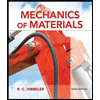 Mechanics of Materials (10th Edition)Mechanical EngineeringISBN:9780134319650Author:Russell C. HibbelerPublisher:PEARSON
Mechanics of Materials (10th Edition)Mechanical EngineeringISBN:9780134319650Author:Russell C. HibbelerPublisher:PEARSON Thermodynamics: An Engineering ApproachMechanical EngineeringISBN:9781259822674Author:Yunus A. Cengel Dr., Michael A. BolesPublisher:McGraw-Hill Education
Thermodynamics: An Engineering ApproachMechanical EngineeringISBN:9781259822674Author:Yunus A. Cengel Dr., Michael A. BolesPublisher:McGraw-Hill Education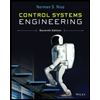 Control Systems EngineeringMechanical EngineeringISBN:9781118170519Author:Norman S. NisePublisher:WILEY
Control Systems EngineeringMechanical EngineeringISBN:9781118170519Author:Norman S. NisePublisher:WILEY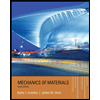 Mechanics of Materials (MindTap Course List)Mechanical EngineeringISBN:9781337093347Author:Barry J. Goodno, James M. GerePublisher:Cengage Learning
Mechanics of Materials (MindTap Course List)Mechanical EngineeringISBN:9781337093347Author:Barry J. Goodno, James M. GerePublisher:Cengage Learning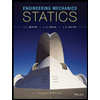 Engineering Mechanics: StaticsMechanical EngineeringISBN:9781118807330Author:James L. Meriam, L. G. Kraige, J. N. BoltonPublisher:WILEY
Engineering Mechanics: StaticsMechanical EngineeringISBN:9781118807330Author:James L. Meriam, L. G. Kraige, J. N. BoltonPublisher:WILEY

Elements Of Electromagnetics
Mechanical Engineering
ISBN:9780190698614
Author:Sadiku, Matthew N. O.
Publisher:Oxford University Press

Mechanics of Materials (10th Edition)
Mechanical Engineering
ISBN:9780134319650
Author:Russell C. Hibbeler
Publisher:PEARSON

Thermodynamics: An Engineering Approach
Mechanical Engineering
ISBN:9781259822674
Author:Yunus A. Cengel Dr., Michael A. Boles
Publisher:McGraw-Hill Education

Control Systems Engineering
Mechanical Engineering
ISBN:9781118170519
Author:Norman S. Nise
Publisher:WILEY

Mechanics of Materials (MindTap Course List)
Mechanical Engineering
ISBN:9781337093347
Author:Barry J. Goodno, James M. Gere
Publisher:Cengage Learning

Engineering Mechanics: Statics
Mechanical Engineering
ISBN:9781118807330
Author:James L. Meriam, L. G. Kraige, J. N. Bolton
Publisher:WILEY
Physics 33 - Fluid Statics (1 of 10) Pressure in a Fluid; Author: Michel van Biezen;https://www.youtube.com/watch?v=mzjlAla3H1Q;License: Standard YouTube License, CC-BY